Active Projects
CyberPowder - Wireless Networking Workforce Development using the POWDER platform
National Science Foundation (8/1/2024 – 7/31/2026)
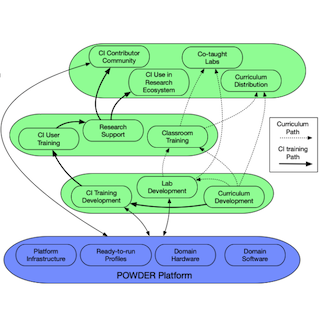
POWDER-ENS - Enhancing and Sustaining the POWDER Platform
National Science Foundation (10/1/2024 – 9/30/2028)
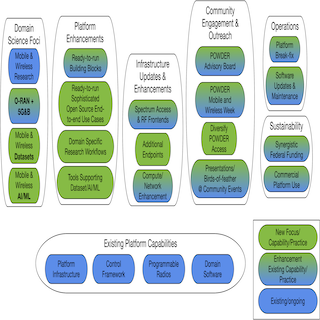
Inequity and Engineered Systems
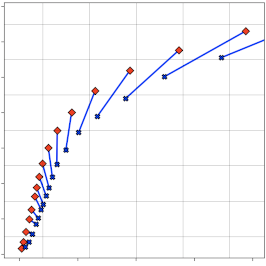
Example Publications:
- Kerri Prinos, Cathleen A. Power, and Neal Patwari, Speaking of accent: A content analysis of accent misconceptions in ASR research, ACM Fairness, Accountability and Transparency Conference (FAccT 2024), 4 June 2024. (Video presentation).
- Alex DiChristofano, Henry Shuster, Shefali Chandra, and Neal Patwari, Performance Disparities Between Accents in Automatic Speech Recognition, arXiv:2208.01157 [cs.CL], 1 Aug 2022.
- Lydia Reader, Pegah Nokhiz, Cathleen Power, Neal Patwari, Suresh Venkatasubramanian, Sorelle Friedler, Models for understanding and quantifying feedback in societal systems, The 2022 ACM Conference on Fairness, Accountability, and Transparency (ACM FAccT 2022), 23 June 2022, Seoul, Korea. (Recorded presentation).
- Pegah Nokhiz, Aravinda Kanchana Ruwanpathirana, Neal Patwari and Suresh Venkatasubramanian, Precarity: modeling the long-term effects of compounded decisions on individual instability, AAAI/ACM Conf. on Artificial Intelligence, Ethics, and Society (AIES 2021), 20 May 2021. arXiv:2104.12037 [cs.AI]. (Recorded presentation).
POWDER: Platform for Open Wireless Data-driven Experimental Research
PAWR Project Office (National Science Foundation and Industry Consortium) (4/1/2018 – 3/31/2025)
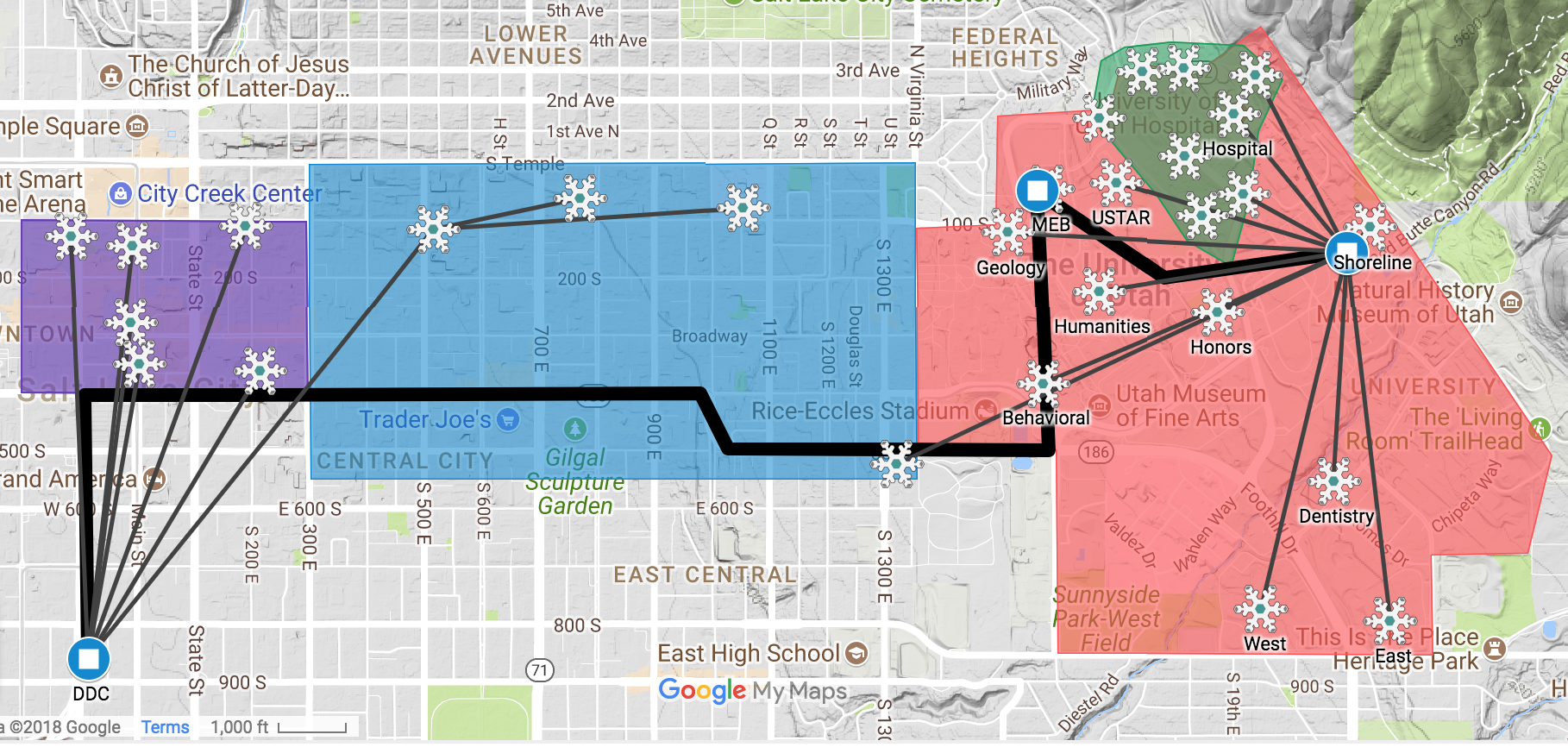
Example Publications:
- Jie Wang, Jonathan Gornet, Alex James W. Orange, Gary Wong, Leigh Stoller, Jacobus Van Der Merwe, Sneha Kumar Kasera, and Neal Patwari, Two Measure is Two Know: Calibration-free Full Duplex Monitoring for Software Radio Platforms, arXiv:2212.08179 [eess.SP], published online 15 Dec. 2022.
- Chia-Ying Kuo and Neal Patwari, Finding an Unknown Interference Source in POWDER via Time Difference of Arrival, 2022 IEEE Intl. Conf. on RFID - Workshop on Digital Spectrum Twinning.
- Frost Mitchell, Aniqua Baset, Neal Patwari, Sneha Kumar Kasera, and Aditya Bhaskara, Deep learning-based localization in limited data regimes, ACM Workshop on Wireless Security and Machine Learning (WiseML 2022), 16 May 2022.
- Jie Wang, Kobus Van der Merwe, and Neal Patwari, Demo Abstract: A compliance monitoring system for open SDR platforms, The 19th ACM Conference on Embedded Networked Sensor Systems, demonstration, 15 Nov 2021.
- Kirk Webb, Jacobus Van der Merwe, Sneha Kumar Kasera, and Neal Patwari, WiMatch: wireless resource matchmaking, IEEE INFOCOM Workshop: Computer and Networking Experimental Research using Testbeds (CNERT 2021), 2021.
- Boston C. Terry, Alex Orange, Neal Patwari, Sneha K. Kasera and Kobus Van der Merwe, Spectrum monitoring and source separation in POWDER, 14th ACM Workshop on Wireless Network Testbeds, Experimental Evaluation & Characterization (ACM WiNTECH 2020), 21 Sept. 2020.
- Boston Terry, "Spectrum monitoring and source separation", University of Utah MS Thesis, 25 Feb 2020.
- Joe Breen, Andy Buffmire, Jonathon Duerig, Kevin Dutt, Eric Eide, Mike Hibler, David Johnson, Sneha K. Kasera, Earl Lewis, Dustin Maas, Alex Orange, Neal Patwari, Dan Reading, Robert Ricci, David Schurig, Leigh Stoller, Kobus Van der Merwe, Kirk Webb and Gary Wong, POWDER: Platform for open wireless data-driven experimental research, 14th ACM Workshop on Wireless Network Testbeds, Experimental Evaluation & Characterization (ACM WiNTECH 2020), 21 Sept. 2020.
SWIFT: Closing the Loop for Accountable Interference-free Spectrum Sharing with Passive Radio Receivers
National Science Foundation (10/1/2022 – 9/30/2025)
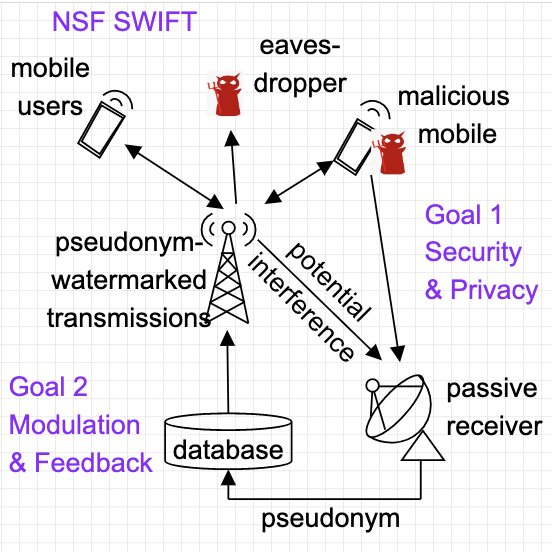
Example Publications:
- Meles G. Weldegebriel, Jie Wang, Gregory Hellbourg, and Neal Patwari, Watermarking of OFDM for pseudonymetry: analysis and experimental results, IEEE ICC 2024 Workshop on Catalyzing Spectrum Sharing via Active-Passive Coexistence (CSSAPC 2024), 9 June 2024.
- Gregory Hellbourg, Neal Patwari, Meles Weldegebriel, and Ning Zhang, Dynamic RFI management in radio astronomy using pseudonymetry, 2024 United States National Committee of URSI National Radio Science Meeting (USNC-URSI NRSM), pp. 282-283, Jan. 2024.
- Gregory Hellbourg, Neal Patwari, Meles Weldegebriel, and Ning Zhang, Dynamic RFI management in radio astronomy using pseudonymetry, 2024 United States National Committee of URSI National Radio Science Meeting (USNC-URSI NRSM), pp. 282-283, Jan. 2024.
- Meles Gebreyesus Weldegebriel, Neal Patwari, Ning Zhang, and Jie Wang, Pseudonymetry: Precise, Private Closed Loop Control for Spectrum Reuse with Passive Receivers, 2022 IEEE Intl. Conf. on RFID, 17 May 2022, pages 91-96.
SII-NRDZ: POWDER-RDZ - Spectrum sharing in the POWDER platform
National Science Foundation (10/1/2022 – 9/30/2025)
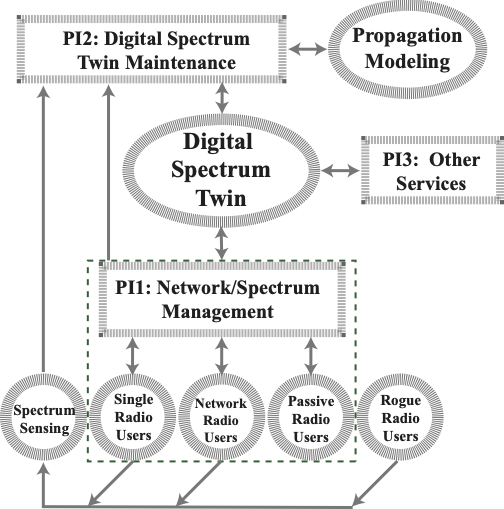
Example Publications:
- Serhat Tadik, Neal Patwari, Kirk Webb, Xuan Lin, and Gregory Durgin, Georeferenced spectrum occupancy analysis using spatially very sparse monitoring data, IEEE ICC 2024 Workshop on Catalyzing Spectrum Sharing via Active-Passive Coexistence (CSSAPC 2024), 9 June 2024.
- Cassie Jeng and Neal Patwari, WATCH: A distributed clock time offset estimation tool for software-defined radio platforms, IEEE INFOCOM: The 11th Intl. Wksp. on Computer and Networking Experimental Research using Testbeds (CNERT 2024), 20 May 2024.
- Frost B. Mitchell, Jie Wang, Neal Patwari and Aditya Bhaskara, Less is more: Improved path loss prediction using simple interpolation models, IEEE International Symposium on Dynamic Spectrum Access Networks (DySPAN 2024): Workshop on Field Trials for Advanced Spectrum Sharing, 13–16 May 2024, Washington, DC.
- Frost B. Mitchell, Jie Wang, Sneha K. Kasera and Aditya Bhaskara, "Utilizing confidence in localization predictions for improved spectrum management", IEEE International Symposium on Dynamic Spectrum Access Networks (DySPAN 2024), 13–16 May 2024, Washington, DC.
- Jie Wang, Meles G. Weldegebriel and Neal Patwari, Channel estimation via loss field: Accurate site-trained modeling for shadowing prediction, IEEE International Symposium on Dynamic Spectrum Access Networks (DySPAN 2024), 13–16 May 2024, Washington, DC. (Slide presentation).
- Chia-Ying Kuo and Neal Patwari, Finding an Unknown Interference Source in POWDER via Time Difference of Arrival, 2022 IEEE Intl. Conf. on RFID - Workshop on Digital Spectrum Twinning.
- Frost Mitchell, Aniqua Baset, Neal Patwari, Sneha Kumar Kasera, and Aditya Bhaskara, Deep learning-based localization in limited data regimes, ACM Workshop on Wireless Security and Machine Learning (WiseML 2022), 16 May 2022.
Recent Projects
Reducing Traumatic Brain Injury Risk with Impact Compensation
National Science Foundation Grant #1622741 (9/1/2016 – 8/31/2022)

Example Publications:
- Aarti Singh and Neal Patwari, Collision prediction using UWB and inertial sensing: experimental evaluation, IEEE Conference on Autonomous Systems (ICAS 2021), 11 Aug 2021.
- Aarti Singh and Neal Patwari, Range-based collision prediction for dynamic motion, IEEE Robocomm 2021, 9 Jan 2021.
- Alemayehu Solomon Abrar, Anh Luong, Gregory Spencer, Nathan Genstein, Neal Patwari, and Mark Minor, Collision prediction from UWB range measurements, arXiv:2010.04313 [eess.SP], 9 Oct 2020.
- Alemayehu Solomon Abrar, Neal Patwari, and Jonathan Decavel-Bueff, Demo Abstract: Collision Prediction from Pairwise Ranging, 19th ACM/IEEE Intl. Conference on Information Processing in Sensor Networks (IPSN 2020), April 2020. (Demo Video).
- Anh Luong, Peter Hillyard, Alemayehu Solomon Abrar, Charissa Che, Anthony Rowe, Thomas Schmid, and Neal Patwari, A Stitch in Time and Frequency Synchronization Saves Bandwidth, 17th ACM/IEEE Intl. Conference on Information Processing in Sensor Networks (IPSN 2018), Porto, Portugal, April 2018.
Detecting and Localizing Spectrum Offenders Using Crowdsourcing
National Science Foundation Grant #1564287 (8/1/2016 – 7/31/2021)
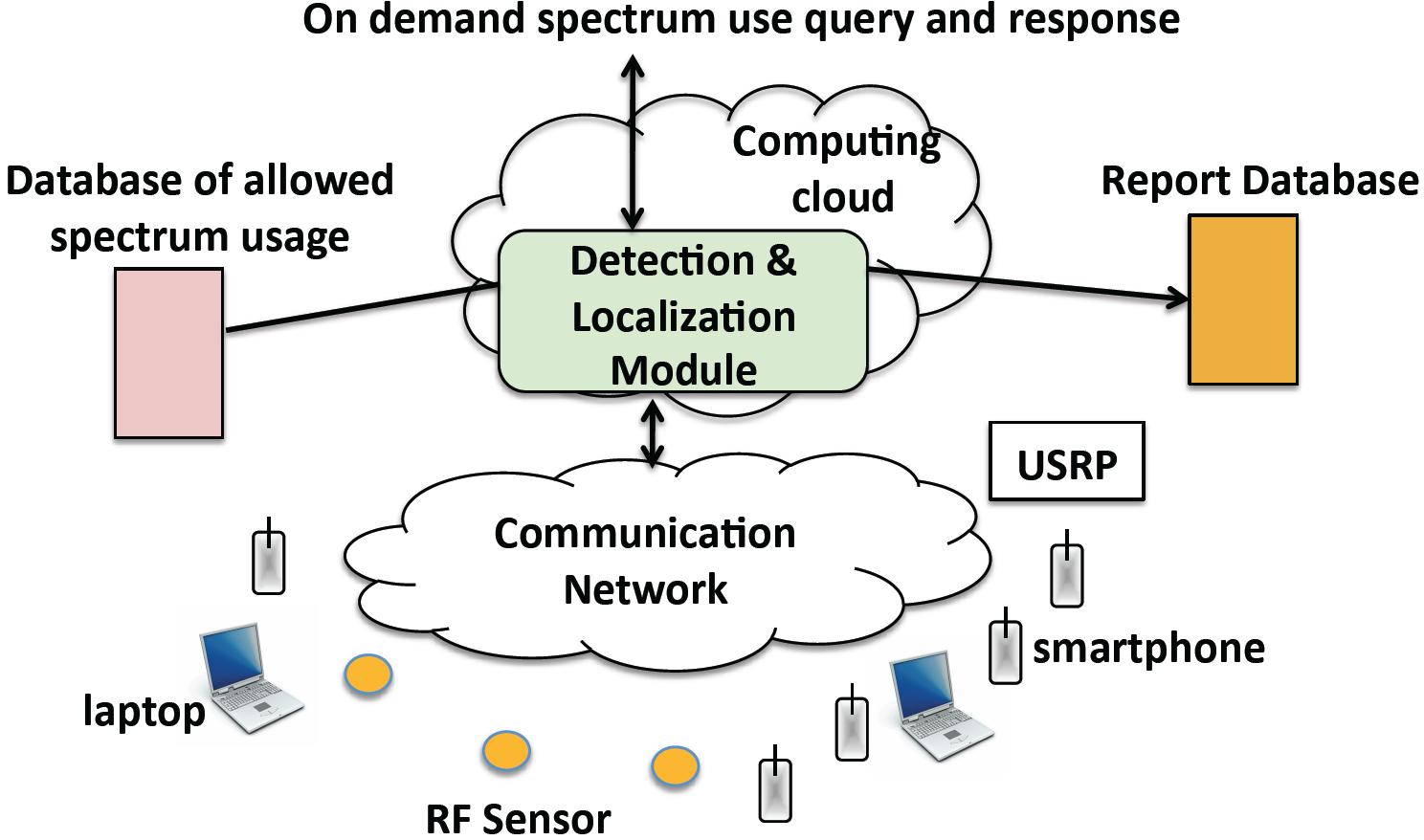
Example Publications:
- Shamik Sarkar, Aniqua Baset, Harsimran Singh, Phillip Smith, Neal Patwari, Sneha Kasera, Kurt Derr, Samuel Ramirez, LLOCUS: learning-based localization using crowdsourcing, ACM MobiHoc 2020, 11 Oct 2020.
- Phillip Smith, Anh Luong, Shamik Sarkar, Harsimran Singh, Neal Patwari, Sneha Kasera, Kurt Derr and Samuel Ramirez, Sitara: spectrum measurement goes mobile through crowd-sourcing, 16th Intl. Conf. on Mobile Ad-hoc and Smart Systems (IEEE MASS 2019), posted at arXiv:1905.13172 [cs.NI].
- Phillip Smith, Anh Luong, Shamik Sarkar, Harsimran Singh, Neal Patwari, Sneha Kasera, Kurt Derr and Samuel Ramirez, Demo Abstract: Cost-effective Crowdsensing: Spectrum Monitoring with Sitara, 16th Intl. Conf. on Mobile Ad-hoc and Smart Systems (IEEE MASS 2019), 5 Nov 2019.
- Anuj Dimri, Harsimran Singh, Shamik Sarkar, Sneha K. Kasera, Neal Patwari, Aditya Bhaskara, Kurt Derr, and Samuel Ramirez, "Privacy enabled noise free data collection in vehicular networks", in Proc. of the 15th Intl. Conf. on Mobile Ad-hoc and Sensor Systems (IEEE MASS 2018), 9 pages, 10 Oct. 2018, Chengdu, China.
- Mojgan Khaledi, Mehrdad Khaledi, Shamik Sarkar, Sneha K. Kasera, Neal Patwari, Kurt Derr, and Samuel Ramirez, Simultaneous power-based localization of transmitters for crowdsourced spectrum monitoring, in MobiCom 2017, Snowbird, Utah, Oct. 2017.
- Anh Luong, Alemayehu Solomon Abrar, Thomas Schmid, and Neal Patwari, RSSI step size: 1 dB is not enough!, in Proc. 3rd ACM Workshop on Hot Topics in Wireless (HotWireless 2016), 3 Oct. 2016.
Preventing Radio Window Attacks
Army Research Office Grant #69215CS (6/25/2017 – 6/24/2020)
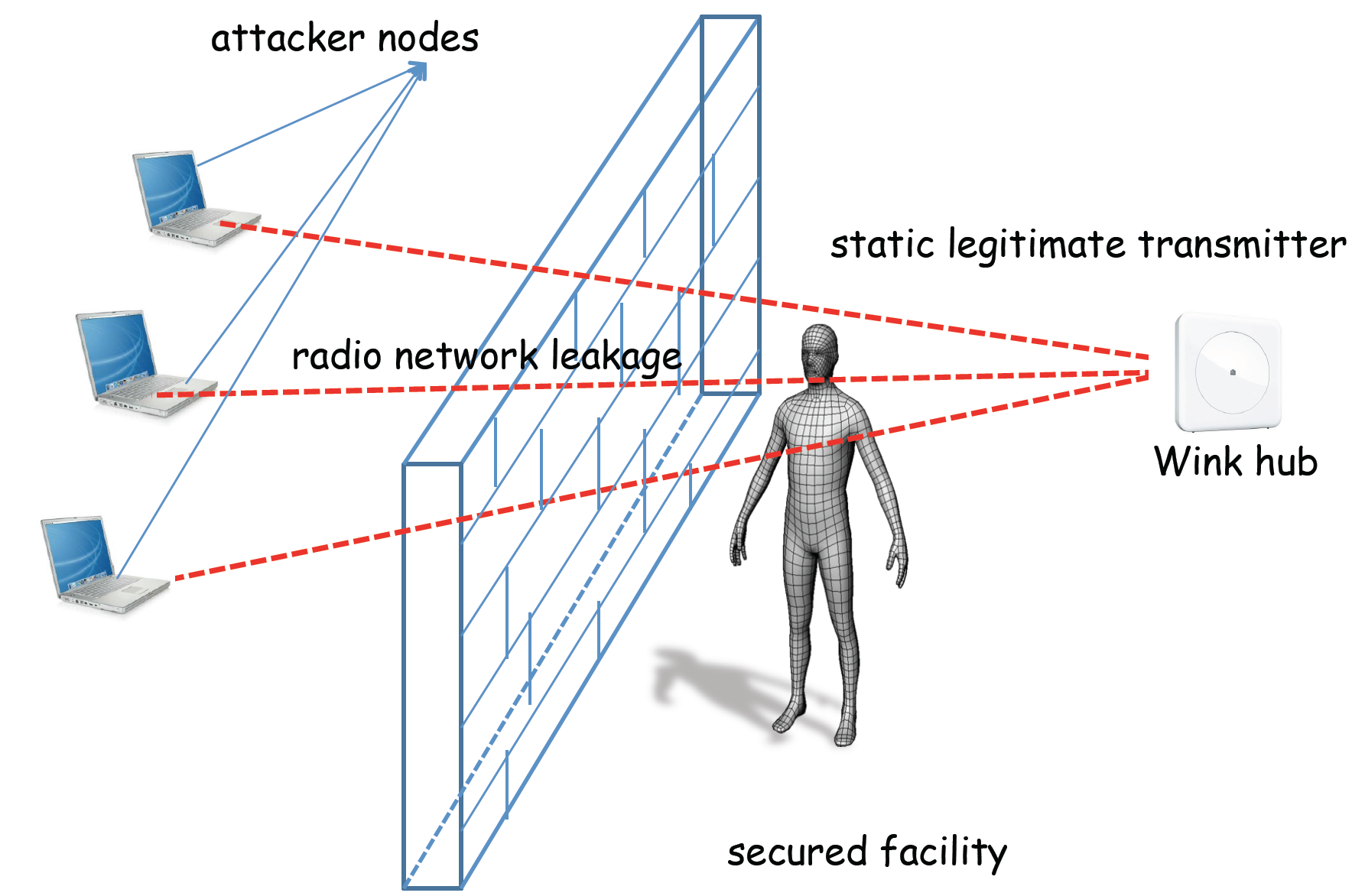
Example Publications:
- Syed Ayaz Mahmud, Neal Patwari, and Sneha K. Kasera, How to get away with MoRTr: MIMO beam altering for radio window privacy, The 18th IEEE Intl. Conf. on Mobile Ad-Hoc and Smart Systems (MASS 2021), virtual, 4-7 Oct. 2021.
- Pruthuvi Maheshakya Wijewardena, Aditya Bhaskara, Sneha Kumar Kasera, Syed Ayaz Mahmud, Neal Patwari, A plug-n-play game theoretic framework for defending against radio window attacks, Proceedings of the 13th ACM Conference on Security and Privacy in Wireless and Mobile Networks (WiSec 2020), July 8, 2020, pp. 284-294.
- Alemayehu Solomon Abrar, Neal Patwari, and Sneha Kumar Kasera, Quantifying interference-assisted signal strength surveillance of sound vibrations, IEEE Trans. on Information Forensics and Security, vol 16, 2021, pp. 2018-2030, arXiv:2002.09489 [eess.SP], first appeared 16 Dec 2020.
- Alemayehu Solomon Abrar, Anh Luong, Peter Hillyard, and Neal Patwari, Pulse rate monitoring using narrowband received signal strength measurements, 1st ACM Workshop on Device-Free Human Sensing (DFHS 2019), 10 Nov 2019, New York.
- Alemayehu Solomon Abrar, Neal Patwari, Aniqua Baset, and Sneha Kumar Kasera, Quantifying an interference-assisted signal strength breathing surveillance attack, arXiv.org Technical Report, arXiv:1905.03939 [eess. SP], posted 10 May 2019.
- Jie Wang, Alemayehu Solomon Abrar, and Neal Patwari, Received Power Based Vital Sign Monitoring, in 'Contactless Vital Sign Monitoring', edited volume; Wenjin Wang and Xuyu Wang, eds. Elsevier, published 2022, available online 24 Sept. 2021, pages 205-230.
- Arijit Banerjee, Dustin Maas, Maurizio Bocca, Neal Patwari and Sneha K. Kasera, Violating location privacy through walls by passive monitoring of radio windows, in Proc. of the 2014 ACM Conf. on Security and Privacy in Wireless and Mobile Networks (WiSec), July 2014, pp. 69-80.
Utah PRISMS Project: Informatics Platforms for Smart and Healthy Homes
NIH National Institute of Biomedical Imaging and Bioengineering Grant #1U54EB021973-01 (9/30/2015 – 9/29/2019)
![]()
Example Publications:
- Shruti Hegde, Kyeong T. Min, James Moore, Philip Lundrigan, Neal Patwari, Scott Collingwood, Alfred Balch, Kerry E. Kelly, Indoor Household Particulate Matter Measurements Using a Network of Low-cost Sensors, Aerosol Air Quality Research, (open access) doi: 10.4209/aaqr.2019.01.0046, 2020.
- Philip Lundrigan, Neal Patwari and Sneha Kasera, On-off noise power communication, 25th Annual Intl. Conf. on Mobile Computing and Networking (ACM MobiCom 2019), 21 Oct. 2019, Los Cabos.
- Philip Lundrigan, Kyeong T. Min, Neal Patwari, Sneha Kumar Kasera, Kerry Kelly, Jimmy Moore, Miriah Meyer, Scott C. Collingwood, Flory Nkoy, Brian Stone, and Katherine Sward, EpiFi: An in-home IoT architecture for epidemiological deployments, IEEE Intl. Workshop on Practical Issues in Building Sensor Network Applications (SenseApp 2018). (Slide Presentation).
- Philip Lundrigan, Sneha K. Kasera, and Neal Patwari, STRAP: secure transfer of association protocol, 27th Intl. Conference on Computer Communications and Networks (ICCCN 2018), Hangzhou, China, July 30 2018.
- Kyeong T. Min, Philip Lundrigan, Neal Patwari, Katherine Sward, and Scott C. Collingwood, Smart home air filtering system: A randomized controlled trial for performance evaluation, 3rd IEEE / ACM Conference on Connected Health: Applications, Systems, and Engineering (CHASE 2018), 26 Sept. 2018, Washington DC. (Slide Presentation).
- Philip Lundrigan, Kyeong Min, Neal Patwari, Sneha K. Kasera, Kerry Kelly, Jimmy Moore, Miriah Meyer, Scott C. Collingwood, Flory Nkoy, Bryan Stone, and Katherine Sward, EpiFi: An In-Home Sensor Network Architecture for Epidemiological Studies, arXiv.org Technical Report, arXiv:1709.02233 [cs.NI].
- Katherine Sward, Philip Lundrigan, Neal Patwari, Ram Gouripeddi, Albert Lund, Julio Facelli, "An Infrastructure for Generating Exposomes: Initial Lessons from the Utah PRISMS Platform", Presentation and Demonstration at the 27th Annual Meeting of the Intl. Society of Exposure Science (ISES), October 2017.
- Kyeong T. Min, Philip Lundrigan, Neal Patwari, Demo abstract: IASA - indoor air quality sensing and automation, in ACM/IEEE Information Processing in Sensor Networks 2017, April 2017.
PlusOne: Prototyping and Validation of a Wireless In-Home Breathing Monitor for Prevention of Overdose Deaths
NIH National Institute on Drug Abuse Grant #DA041960 (4/1/2016 – 3/31/2018)
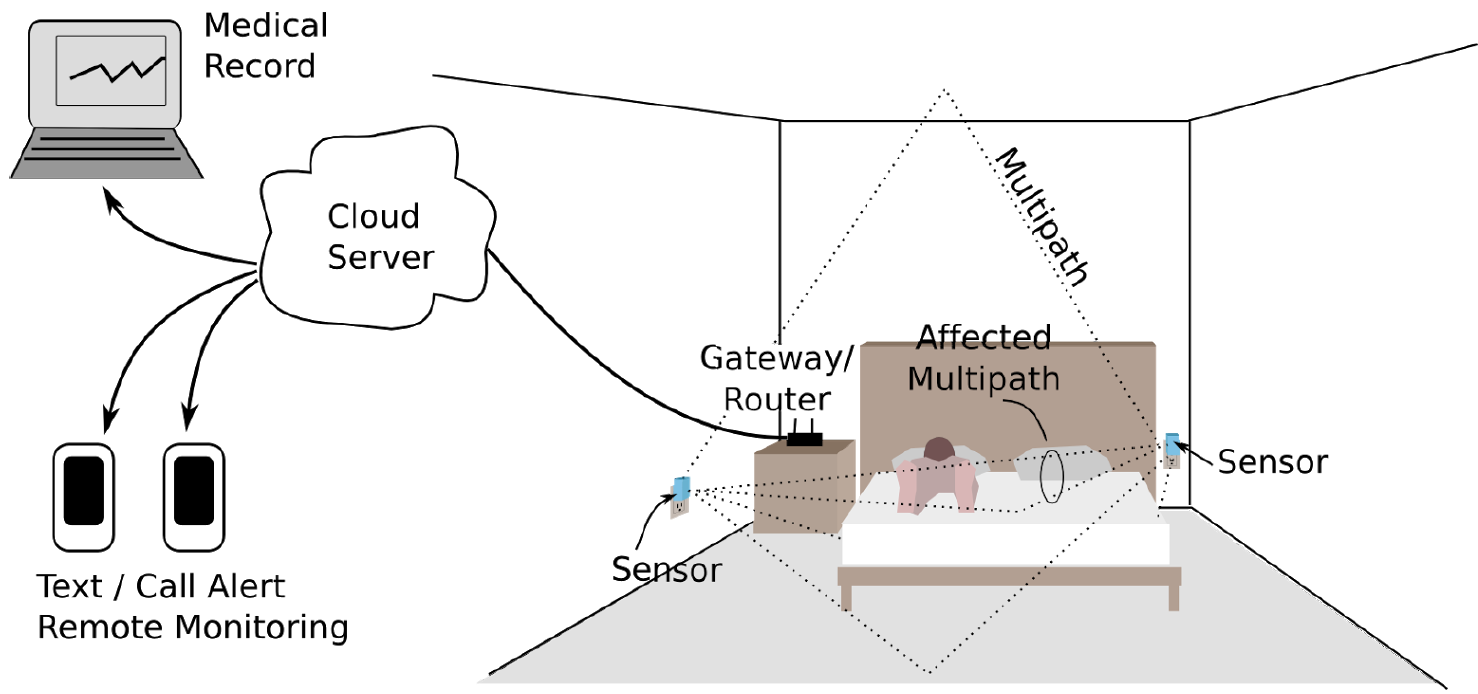
Example Publications:
- Peter Hillyard and Neal Patwari, Never use labels: Signal strength-based Bayesian device-free localization in changing environments, IEEE Transactions on Mobile Computing, DOI: 10.1109/TMC.2019.2901782, appeared online 26 Feb. 2019.
- Peter Hillyard, Anh Luong, Alemayehu Solomon Abrar, Neal Patwari, Krishna Sundar, Robert Farney, and Jason Burch, Christina A. Porucznik, Sarah Pollard, Experience: Cross-technology radio respiratory monitoring performance study, in Proc. of the 24th Annual Intl. Conference on Mobile Computing and Networking (MobiCom 2018), 1 Nov. 2018, New Delhi.
- Peter Hillyard, Anh Luong, Alemayehu Solomon Abrar, Neal Patwari, Krishna Sundar, Robert Farney, Jason Burch, Christina A. Porucznik, Sarah Hatch Pollard, Comparing Respiratory Monitoring Performance of Commercial Wireless Devices, arXiv.org Technical Report, arXiv:1807.06767 [eess.SP], posted 18 July 2018.
- Anh Luong, Alemayehu Solomon Abrar, Thomas Schmid, and Neal Patwari, RSSI step size: 1 dB is not enough!, in Proc. 3rd ACM Workshop on Hot Topics in Wireless (HotWireless 2016), 3 Oct. 2016.
Roseline: Enabling Robust, Secure and Efficient Knowledge of Time Across the System Stack
National Science Foundation (CPS Frontier) Grant #1329755 (6/15/2014 – 5/31/2017)
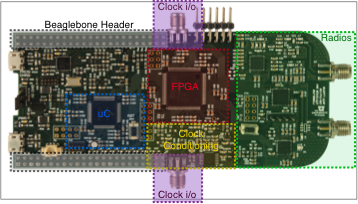
Example Publications:
- Anh Luong, Peter Hillyard, Alemayehu Solomon Abrar, Charissa Che, Anthony Rowe, Thomas Schmid, and Neal Patwari, A Stitch in Time and Frequency Synchronization Saves Bandwidth, 17th ACM/IEEE Intl. Conference on Information Processing in Sensor Networks (IPSN 2018), Porto, Portugal, April 2018.
- Anh Luong, Thomas Schmid, and Neal Patwari, Demo Abstract: A Platform Enabling Local Oscillator Frequency Synchronization, in 14th ACM Conference on Embedded Network Sensor Systems (SenSys 2016), Nov. 2016.
Advanced Radio-Frequency (RF) Based Environmental Monitoring Systems
National Science Foundation Grant #1407949 (8/1/2014 – 7/31/2017)
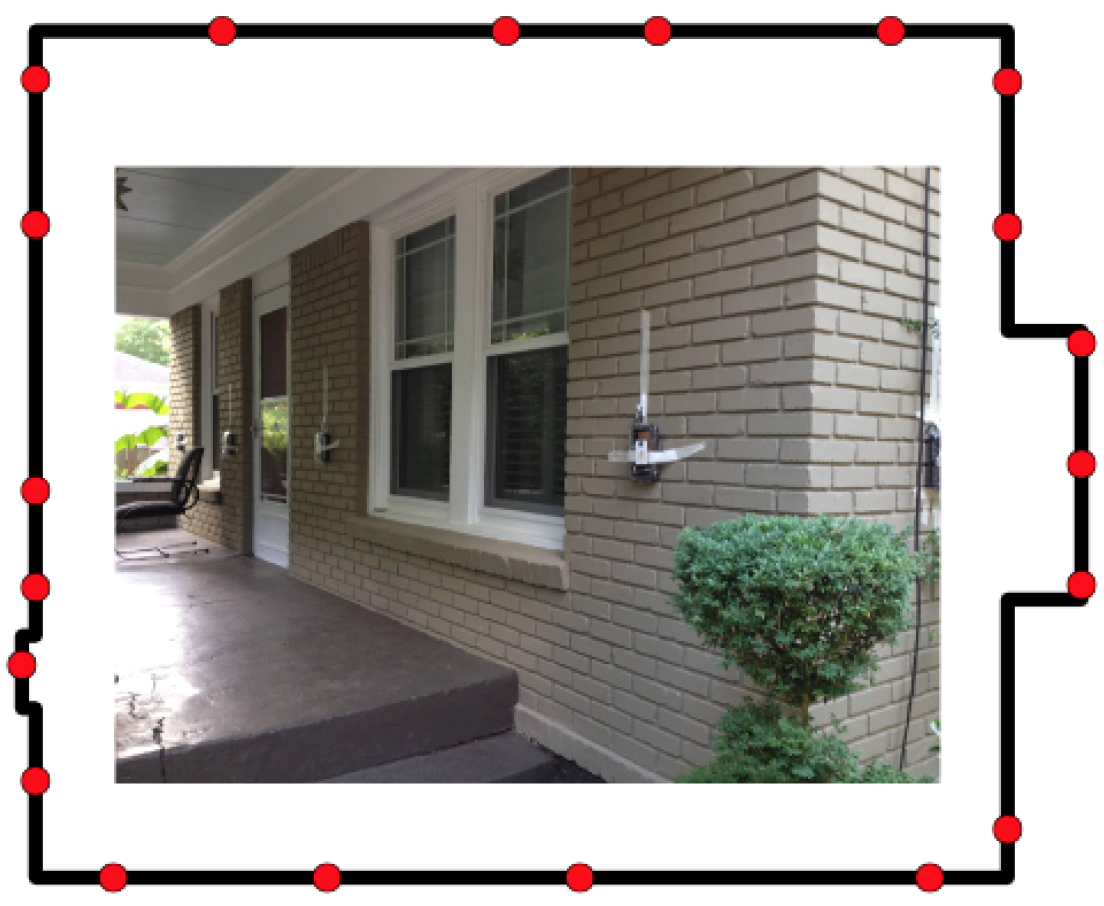
Example Publications:
- Hüseyin Yiğitler, Ossi Kaltiokallio, Roland Hostettler, Alemayehu Solomon Abrar, Riku Jäntti, Neal Patwari and Simo Särkkä, "RSS Models for Respiration Rate Monitoring", IEEE Transactions on Mobile Computing, DOI: 10.1109/TMC.2019.2897682, appeared online 5 Feb. 2019.
- Amal Al-Husseiny and Neal Patwari, Unsupervised learning of signal strength models for device-free localization, in Proc. of the 20th IEEE Intl. Symposium on a World of Wireless, Mobile and Multimedia Networks (IEEE WoWMoM 2019), June 2019.
- Alemayehu Solomon Abrar, Anh Luong, Peter Hillyard, and Neal Patwari, Poster Abstract: Link Line Crossing Speed Estimation with Narrowband Signal Strength, in Proc. of the 23rd Annual Intl. Conference on Mobile Computing and Networking (MobiCom 2017), October 17, 2017.
- Peter Hillyard, Cheng Qi, Amal Al-Husseiny Yousseef, Gregory D. Durgin, and Neal Patwari, Focusing Through Walls: An E-shaped Patch Antenna Improves Whole-Home Radio Tomography, 2017 IEEE Intl. Conference on RFID, May 2017.
- Ossi Kaltiokallio, Riku Jäntti, and Neal Patwari, ARTI: An Adaptive Radio Tomographic Imaging System, IEEE Trans. on Vehicular Technology, appeared online Jan 2017.
- Peter Hillyard, Anh Luong, and Neal Patwari, Highly reliable signal strength-based boundary crossing localization in outdoor time-varying environments, ACM/IEEE Information Processing in Sensor Networks 2016, April 2016.
- Peter Hillyard, Neal Patwari, Samira Daruki, and Suresh Venkatasubramanian, You're crossing the line: localizing border crossings using wireless RF links, IEEE Signal Processing and SP Education Workshop (SPW-2015), Snowbird Utah, 9-12 Aug. 2015.
- Anh Luong, Spencer Madsen, Michael Empey, and Neal Patwari, Demonstration abstract: RUBreathing: non-contact real time respiratory rate monitoring system, ACM/IEEE Information Processing in Sensor Networks (IPSN) 2015, April 2015.
- Bo Wei, Ambuj Varshney, Neal Patwari, Wen Hu, Thiemo Voigt, and Chun Tung Chou, dRTI: directional radio tomography, ACM/IEEE Information Processing in Sensor Networks (IPSN) 2015, April 2015.